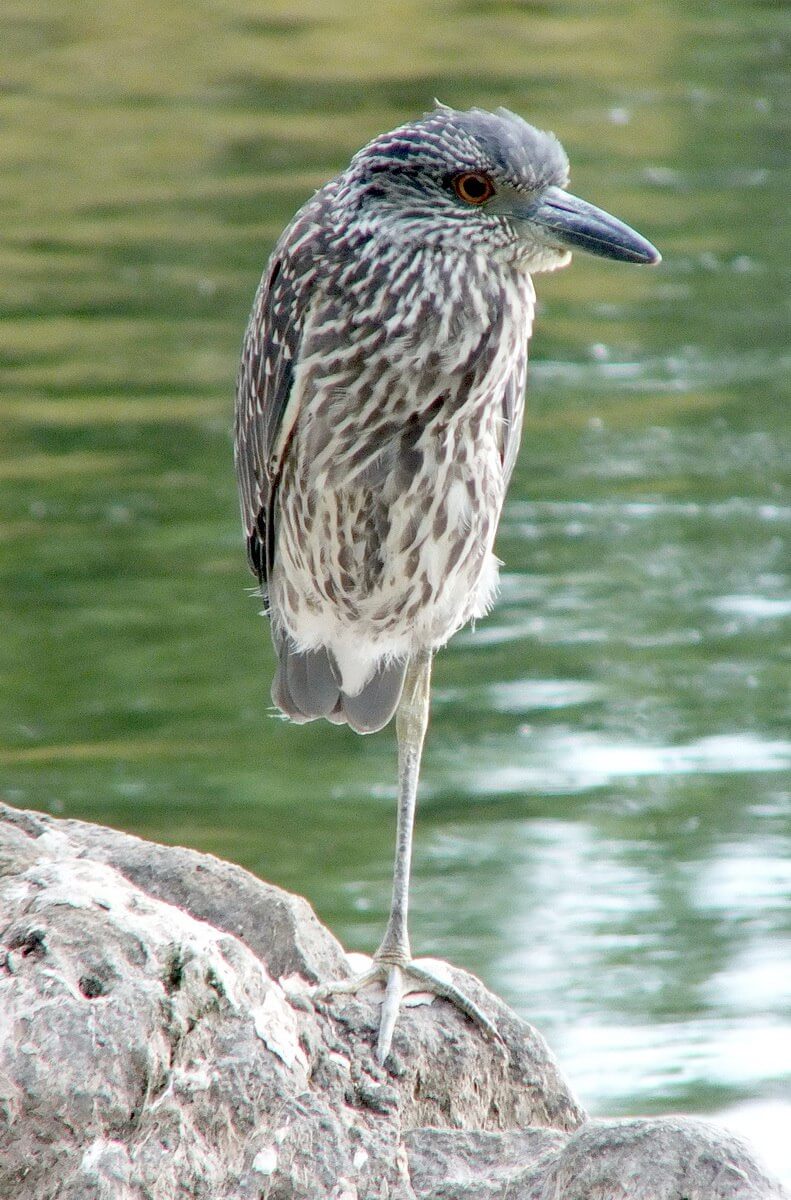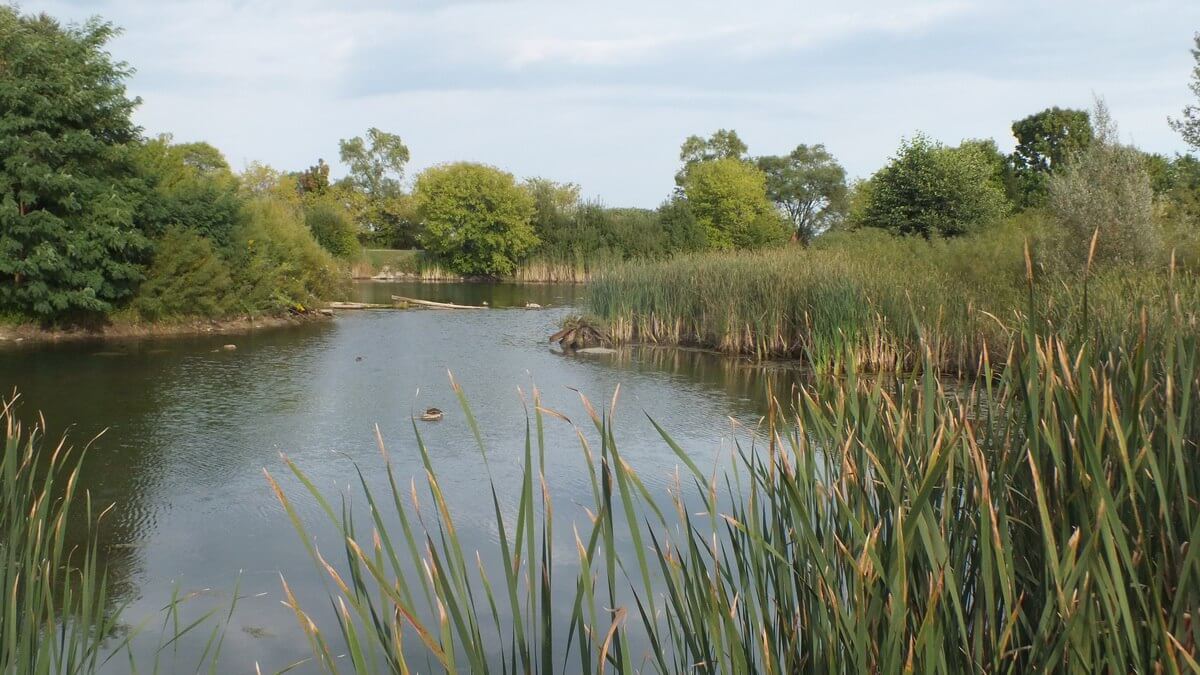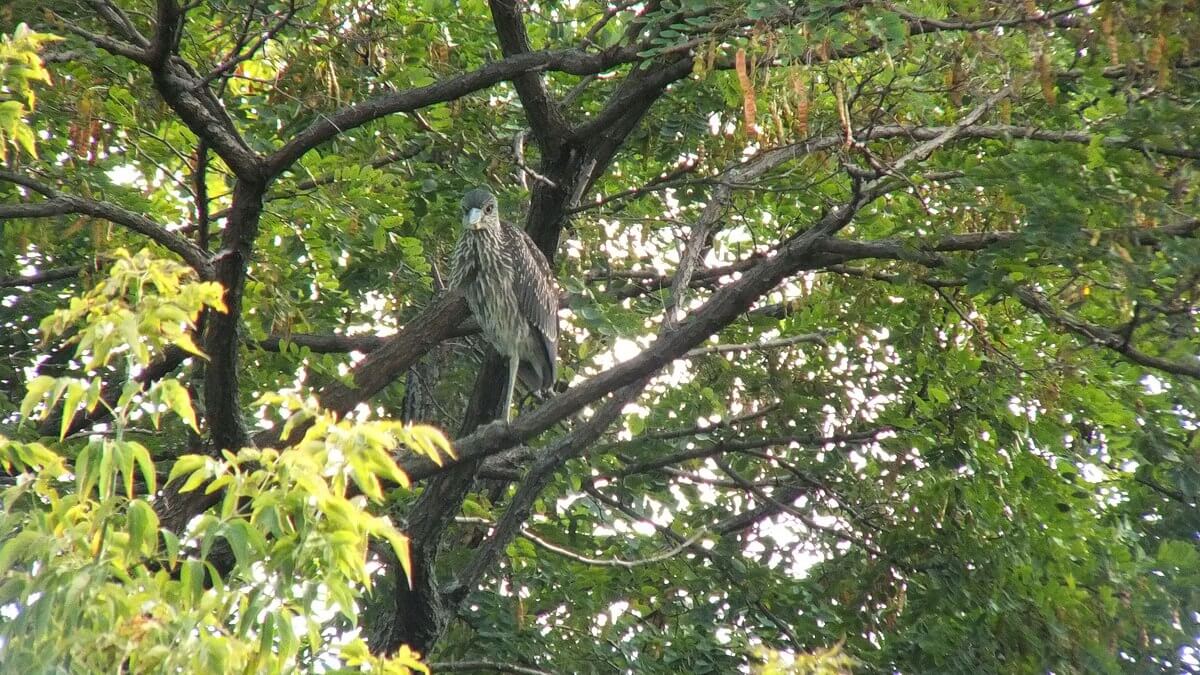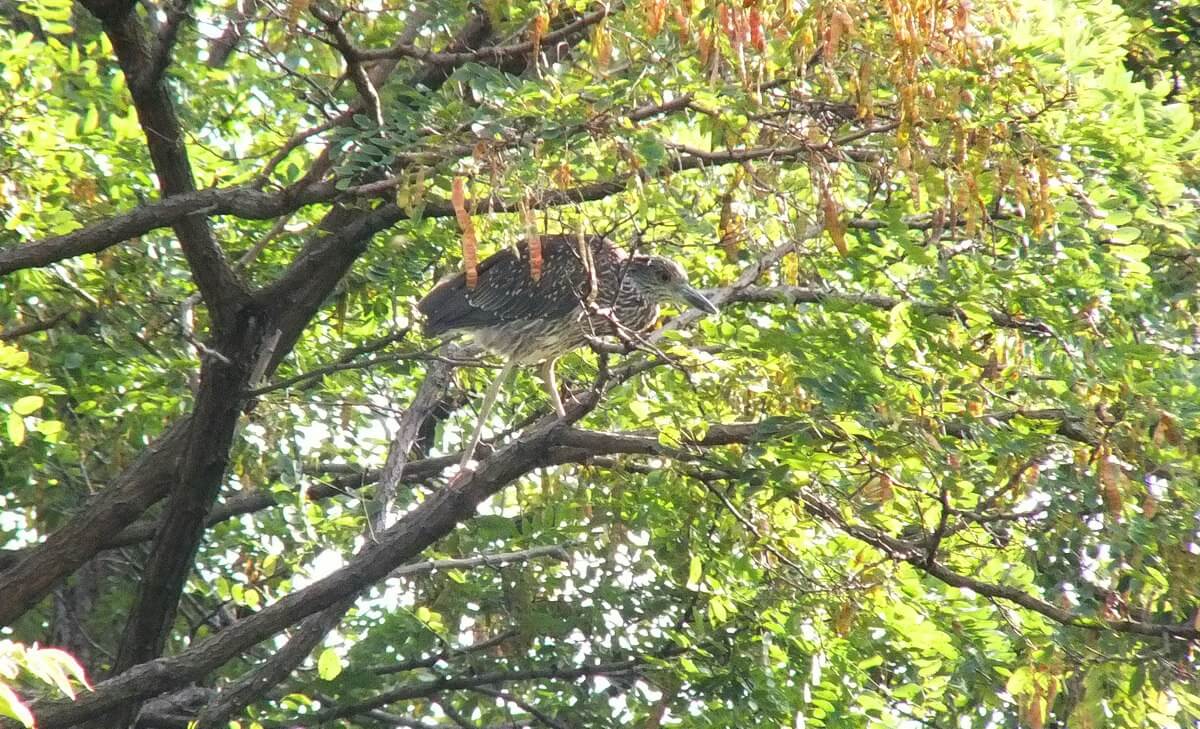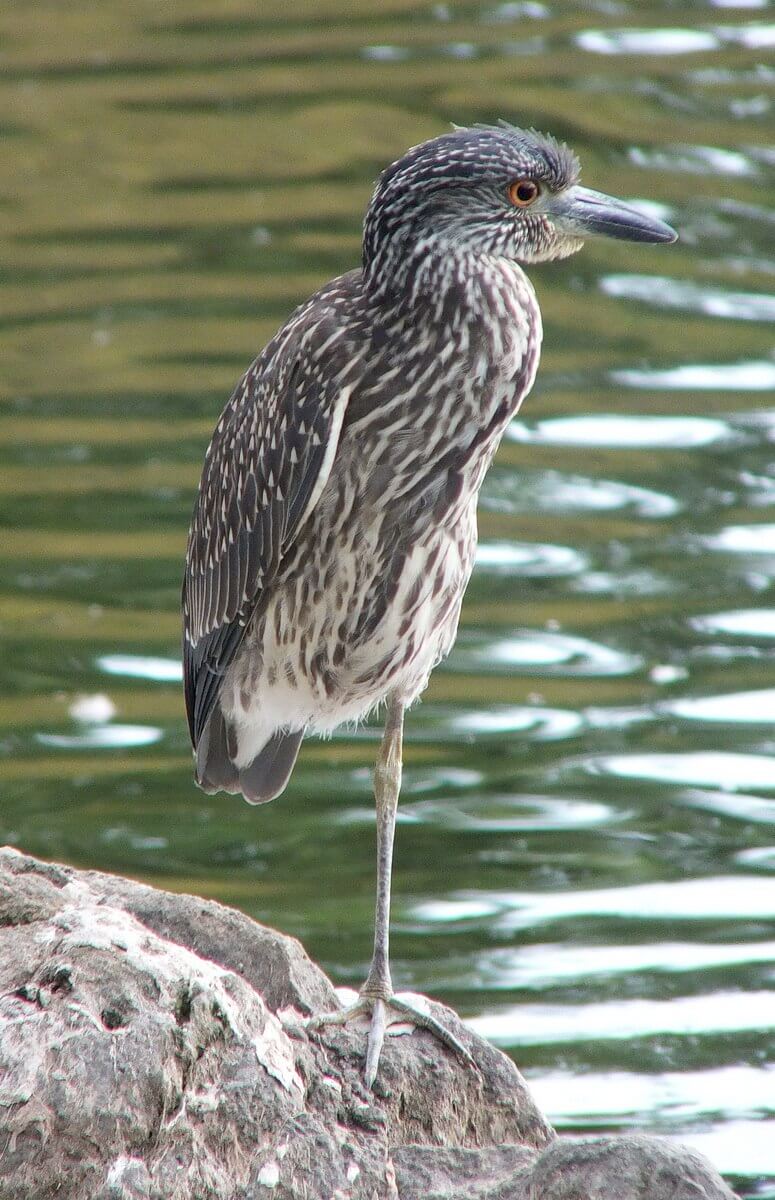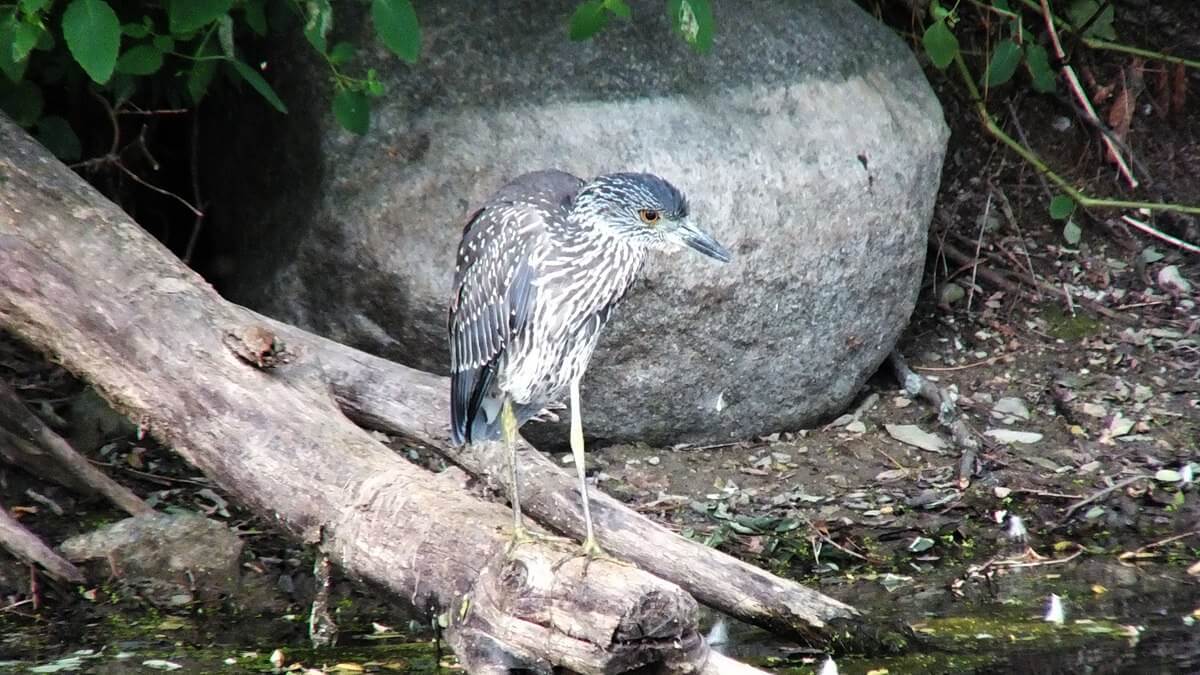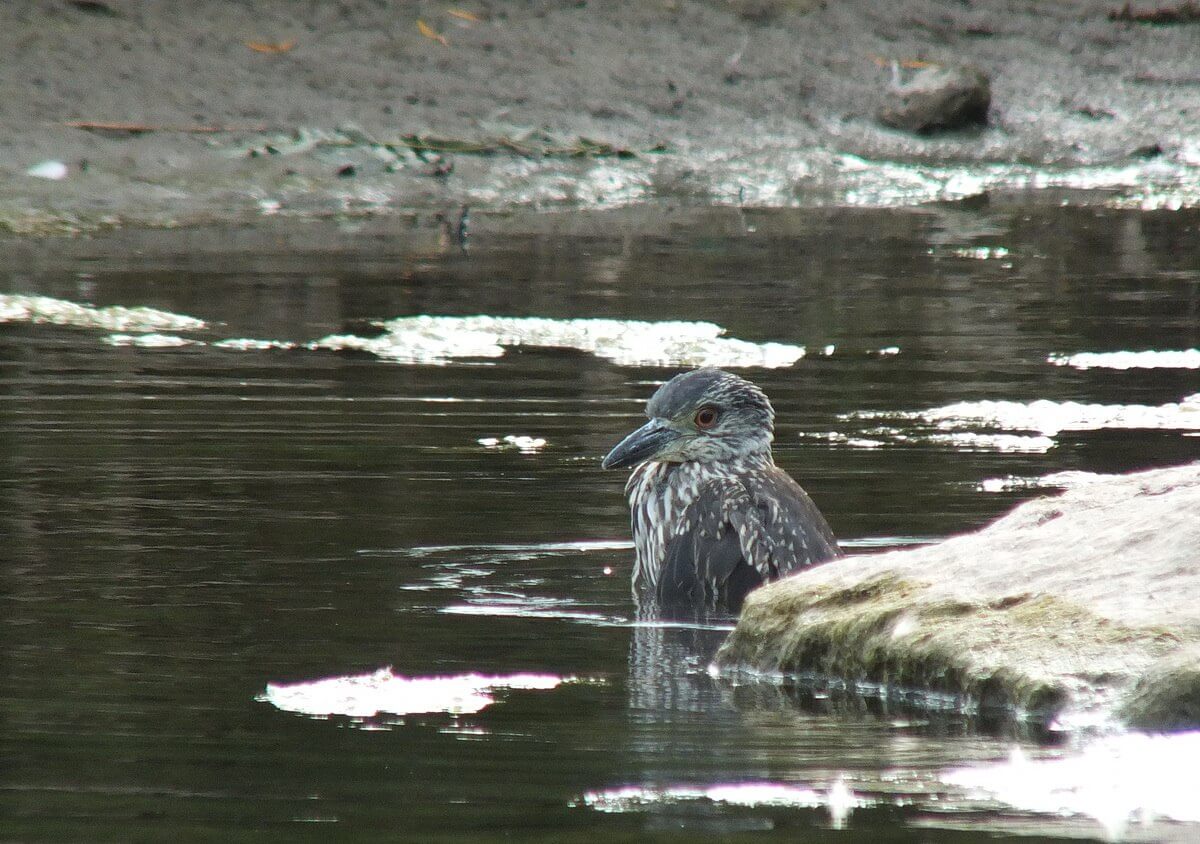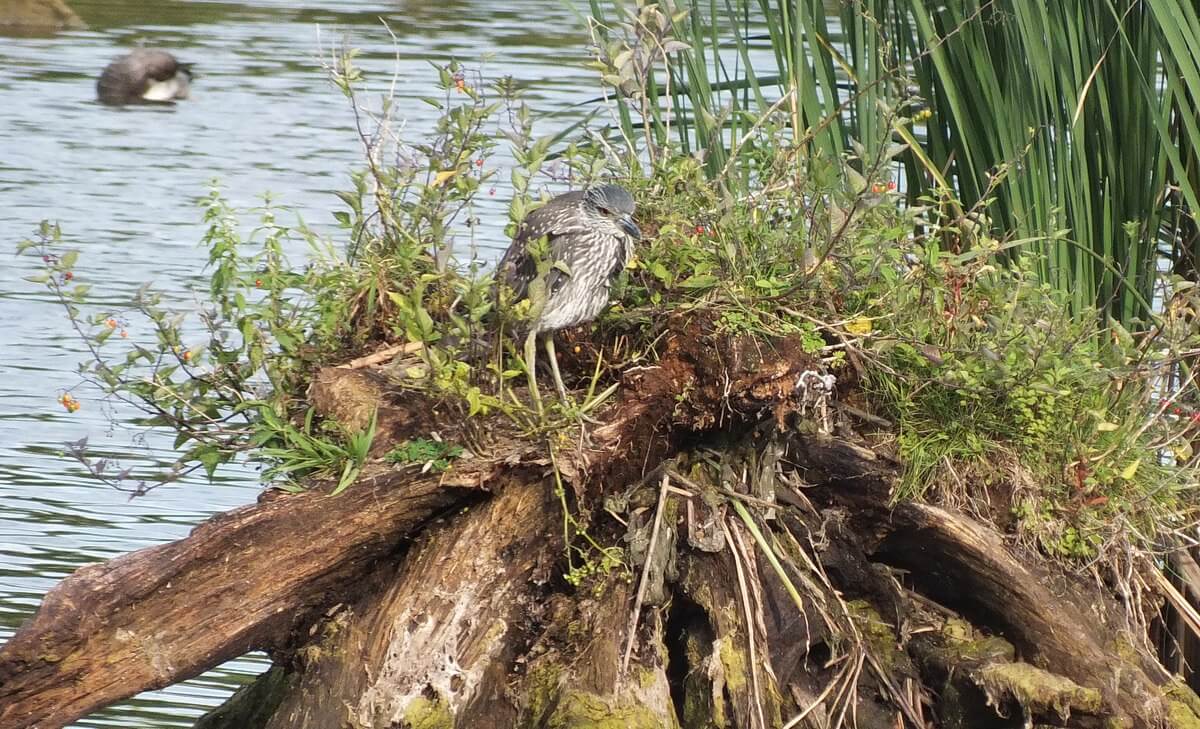Yellow-Crowned Night Heron At Colonel Samuel Smith Park
For weeks, Bob and I had been hearing about a Yellow-crowned Night Heron making a stay at Colonel Samuel Smith Park on Toronto’s lakeshore. When finally we had a chance to pop down there for a look, it was quite late in the afternoon so we did not hold out much hope of seeing it since other people had been numerous times without success. Lo and behold, after we circled the main pond on an obscure trail through the woodlot, we came out to a clearing and found the Night Heron perched nonchalantly on a rock.
We began our search for the Herons on the observation deck at the pond. I say Herons because a Green Heron had also been reported, but seeing not a one, we took to circumventing the pond…
which finally found us on the north side where North Creek flows into the pond. As we crept along the wooded shore, a sudden flurry of water and wings resulted when a large bird took to the sky and then perched in a tree on the opposite bank. Bob and I were not exactly sure what kind of bird we were looking at. In the same tree, crouched low in behind the leaves, was an adult Black-crowned Night Heron, but this slate-grey bird had a longer neck and legs than an immature Black-crowned Night Heron, so we thought we might be onto something.
Bob and I observed the bird at length as it preened its feathers, scrutinized its surroundings, and then finally ambled out onto the end of the tree branch. In the meantime, I had decided to take a load off my feet and sat down in the long, dry grass a few feet from the water’s edge. Next thing you know, I felt a small stinging sensation on my ankle. When I looked down, I saw tiny red ants swarming all over my running shoes and climbing up my pant legs. We were quite distracted for a few minutes, me doing quite the dance and Bob brushing the ants from my clothing. When next we looked at the tree, the Heron had flown the coop.
Feeling a little let down, Bob and I abandoned the cow path through the woods for the wide open space that borders the grove of trees, and then circled back to a small clearing for another glance at the pond’s perimeter. To our shock, there was the same Heron perched primly on one leg on top of a rock not 20 feet away from us. Another birder confirmed that we were, in fact, looking at an immature Yellow-crowned Night Heron. We couldn’t believe our luck.
Why was there so much fuss about this young Yellow-crowned Night Heron? It is because this species of bird has only ever been known to breed from the New England states in U.S.A. south to Florida and only along the Mississippi River as far north as Minnesota in the interior of U.S.A. We wondered if climate change was a factor once again, or if this was just an isolated occurrence.
A mature Yellow-crowned Night Heron is quite unmistakeable in its appearance, but the juvenile strongly resembles an immature Black-crowned Night Heron. Yellow-crowned Night Herons have a long neck and thick, black dagger-like bill. Their plumage is more of a slate grey finely speckled with white, while their legs are yellowish-green. One detail that is diagnostic is that the crown is slightly darker than the back.
The Yellow-crowned Night Heron did not remain in one spot for long. It flew to the shallows on the opposite side of the pond, hopped along partially-submerged logs, and eventually patrolled the shore in sight of the observation deck. In each instance, the bird was actively hunting for food and did not come away hungry. Unlike other night herons, Yellow-crowned hunt both during the day and at night. In inland areas, their preference is for crayfish, but fish, frogs, eels, snails and even small snakes can contribute substantially to their diets. Although its bill is sharp, this heron does not spear its food but instead crushes it with its powerful bill.
The pond at Colonel Samuel Smith Park is a perfect habitat for this species of bird, which frequents a variety of wetlands and forested areas. For over an hour, Bob and I observed the Night Heron as it foraged for food, bathed in the water, and strutted about.
Numerous times, the Yellow-crowned Night Heron immersed itself in the cool water, making a real show of things. Droplets sparkled in the air as the Heron splashed about spraying water in all directions. These birds do wade in shallow water when stalking prey, but the way it was churning up the sediment, I’m sure no prey was in sight. Oddly, the Heron did seem to pick small aquatic insects from the water, the rough contours of the rocks and the rotting surfaces of logs.
Once the Heron rounded a bend in the shoreline, Bob and I figured that was the last we would see of it that day. However, when we double-backed to the observation deck, what did we find but the bird on top of an old tree stump. Time for more photos! Bob observed the bird through the binoculars and was shocked to see it snap off a twig that was then held in its beak as a tool. The Heron was also pulling small berries off of a plant that had found footing in the rotted wood.
Yellow-crowned Night Herons are quite solitary creatures that prefer to nest separately from other birds, and to hunt individually. That would be a benefit when a Heron is slowly stalking prey and waiting until it is close enough to nab.
This beautiful juvenile Yellow-crowned Night Heron will not come into its adult plumage until it is about two years old. Maybe, with any luck, this particular bird will return with a mate to Colonel Samuel Smith Park in subsequent years now that it has determined the location to be suitable for nesting. It would be so neat to see a pair of them.
Frame To Frame – Bob and Jean

